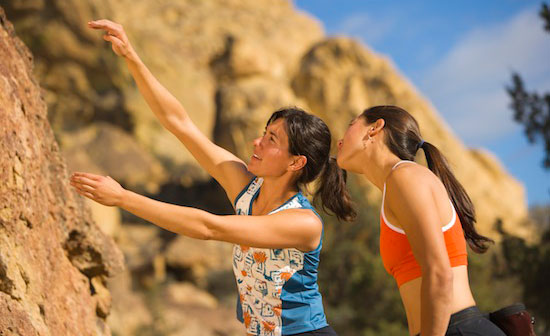The start of a new school year carries an array of emotions for students. New schools, teachers, friends, and classes are only a few things to get used to. There is an overwhelming sense of excitement and anticipation for the impeding year.
For athletes, each new season adds an additional sense of novelty, as they have to adjust their expectations in their sports. Each year brings the possibility of new players, coaches, game tactic, and team chemistry. With such transitions it is easy for athletes to become consumed by things out of their control and lose sight of what is in their control. The continued question athletes should be asking themselves from the weeks leading up to season to the last minute of their final game is “What do I want MY performance to look like?”
Earlier this summer millions of viewers watched USA’s forward, Carli Lloyd, dominate the World Cup Championship against Japan. She finished the game with a hat trick—scoring 3 of the 5 goals. Many fans were left wondering how Lloyd was able to focus on her game and excel under such a high-pressure situation. She shared her secrets stating, “I think at the end of the day you can be physically strong…. but if your mental state isn’t good enough, you can’t bring yourself to bigger and better things.” It’s not surprising that after a performance of her life Lloyd shared that she had utilized her visualization skills for the Championship game saying, “I dreamed of and visualized playing in the World Cup final and visualized scoring four goals.” Visualization is one of the most important mental tools for any athlete. Similarly, Jason Day, stated the following after his PGA Tour win at the Farmers Insurance: “I visualized myself winning and holding the trophy before the week. I tried to visualize it over and over…That’s what I did in the (world) match play and that is what I did this week so obviously that tells me that I need to do that a lot more.”
Clearly, these professionals have experienced success through the use of visualization prior to performance. Both have visualized not only their end outcome dream but the steps in that process as well.
What is Visualization?
Visualization or imagery as it is often referred to is the act of using one’s senses to recreate or create an experience with your mind. Visualization is not just an image but it is polysensory, which is experiencing imagery that involves relevant senses, including: Sight, Sound, Smell, Taste, Touch and Kinesthetic sensation. Visualization is incredibly powerful if done correctly and is a skill that takes time and practice. Even if you are naturally better at imagery it should still be consistently practiced for the best results.
Benefits of Visualization
Visualization is not only helpful for overall success but it helps improve specific skill mastery, increases self-confidence, motivation and attention control, and helps in anxiety reduction. The power of visualization is unlimited. It is important to be aware of why you want to use visualization. For example, is it to master your footwork or to overcome anxiety during penalty kicks? The more specific the better results you will experience. The best part of this mental practice is that is does not take long and does not take equipment. For example, Canadian Olympic Bobsledder, Lyndon Rush says, “I’ll be in the shower or brushing my teeth. It just takes a minute, so I do the whole thing or sometimes just the corners that are more technical. You try to keep it fresh in your head, so when you do get there, you are not just starting at square one. It’s amazing how much you can do in your mind.” Visualization helps an athlete feel prepared and experienced without even physically being there. Give it a try for just 5-10 minutes a day!
So how can we do what the pros do?
The PETTLEP model, devised by Holmes & Collins in 2001, is a great model to start developing your imagery script and skill. PETTLEP is an acronym, which stands for 7 key elements to include during imagery to create the most functionally equivalent image possible.
| Letter | Meaning |
| P – Physical | Imagine the relevant physical characteristics- i.e. what is important to your sport, are you tense? Are you loose? Are you running? Standing? |
| E – Environment | If possible, imagine in the environment where the performance takes place, i.e. gym, field, court |
| T – Task | Try to imagine details relevant to the task and image at the appropriate level of expertise for the performer, i.e. new to sport, elite, professional |
| T – Timing | You can imagine the action in “real-time” as well as “slow motion.” Both styles help develop skill mastery |
| L – Learning | The imagery should be continually changed as the athlete develops. Imagery should be flexible based on skill level and competition. |
| E – Emotion | Athletes many times want to avoid emotion in performance, however, use it to your advantage. Encourage yourself with emotions of confidence, excitement, etc. |
| P – Perspective | The imagery perspective can be first person (through your own eyes) or third person (like watching yourself on video). |
Kat Scardino, M.Ed. and Devin Markle, Co-Directors of Athlete Development at Sports Academy, are members of the WSF Digital Contribution Team.
The content provided for this article has been approved by the Women’s Sports Foundation.

